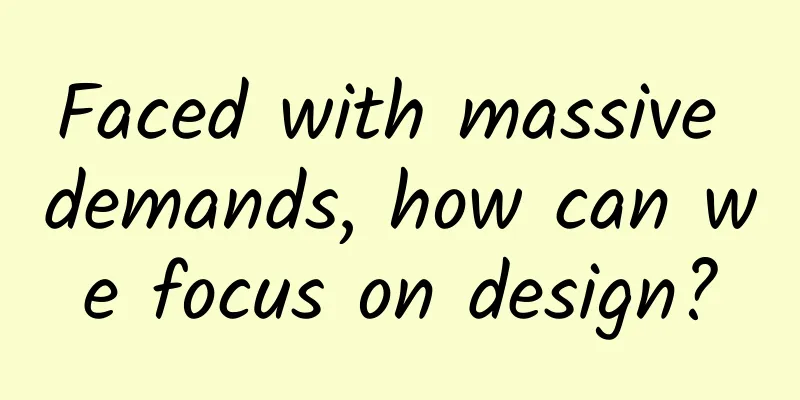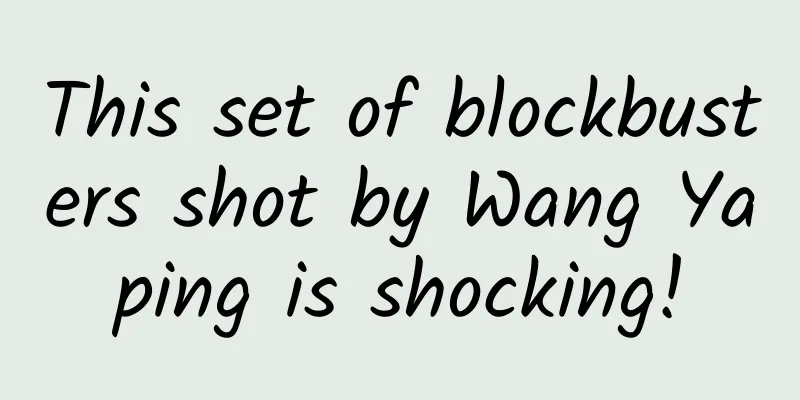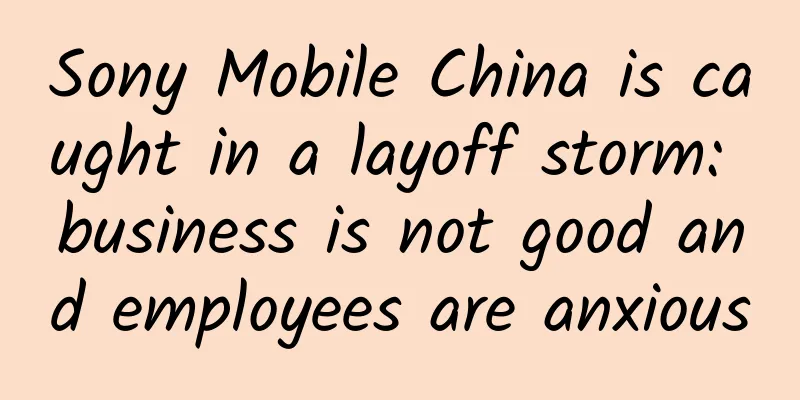Faced with massive demands, how can we focus on design?

|
Designers play a very important role in the production and research process. I believe many students often encounter such a situation: The project iteration cycle is tight, and the requirement documents are piled up. Faced with a huge amount of requirements, we either have to accommodate the time and become machines that can only draw pictures but have no ideas. Or we become hard workers and become soul painters who use their hair to design. So, in the intense business iteration process, how can we grasp the key points and "focus on doing big things" in a targeted manner? As the saying goes: Those who do not consider the overall situation are not qualified for a specific area. In our design work, "grasping the key points" is often more important than "good design". Here we would like to share with you an idea based on the product iteration of Cool Master. Let me first introduce you to the background of Cool Master:
In an agile process with tight delivery schedules and one iteration per week, here are some of our practices: Analyze business from a systematic perspectiveSince the launch of the CoolMaster project, the content construction of the site from 0 to 1 has been roughly completed. The main modules of the site include: Homepage, Model Square, Workbench, Help Center, Activity Center, and Course Center. They are independent of each other, but they also influence each other. They are easy to understand independently. Smart friends can guess the functions of each module by the name, and these functions are irreplaceable. So how do they influence each other? Here comes a word: systematization Please see the following figure: We may have different understandings of the same thing if we look at it independently and if we put it into a system. Similarly, when we view the CoolMaster site as a system and combine it with our business indicators, we can translate this system into the following model: From abstract to concrete, we divide the entire model into three indicator types: 1. Core indicators: The goal that the entire project is responsible for is the basic criterion for judging all project behaviors. 2. Strategy indicators: The set of all variables that affect the core indicators is a secondary supporting indicator broken down based on product strategies. 3. Behavioral indicators: As the strategic indicators become more refined, the strategic indicators of the product will eventually correspond to one or more specific user behavior indicators. We can use the model to find the key areas that affect the core business indicators, and we can also use the lowest-level behavioral indicators to reversely infer the upper-level strategic indicators and quantify the design value. At this point, we can also find the strategic indicators that have a greater impact on the core indicators in this system, which are: the number of registered UVs, the number of site traffic UVs, and the number of client traffic UVs. The product sections corresponding to these three strategic indicators are: Visitor Page, Detail Page and Workbench. They are the projects that need to be focused on in the many product modules of Cool Master. Analyze users in a systematic wayAfter talking about product goals and breakdown, let’s take a look at users. Marketing and user research colleagues can often provide us with a lot of user data in the early stages of a project. In the early stages of a project, we can abstract this information into a few representative keywords. The picture below shows the Cool Master user keywords, which can help us customize the overall design ideas. However, in some more detailed business scenarios, this information does not provide clearer design guidance. So on this basis, we can treat this information as content slices one by one, reorganize these slices according to different standards, and then obtain relatively systematic user information. Let's change a dimension and do another analysis: We can see that when we divide CoolMaster users into different stages, from new visitors to senior users, users at different stages have obvious differences in their demands for products. Visitors and new users pay more attention to the matching of value and demand; senior users pay more attention to maximizing the actual product value. And we need different product strategies for different user groups, and even different "ends" to meet user needs. At this point, we can use the above information to plan different design strategies in different links of the product. However, sometimes the user groups that meet the needs are more focused, and if the above information is not enough to convince us, there is one last skill, which is to find users who are highly matched with the needs (note, highly matched), communicate with them in depth, and create user portraits for them: PS: The user portrait here needs to collect information in a targeted manner based on actual business needs. This is a relatively flexible process that requires designers to grasp the scale. Through the user data of the above three dimensions, we can find the target user groups according to the different modules of the product, and then make corresponding design strategies for them. Next is the third step: Plan design strategies with systematic thinkingDesign strategy for experienced users (taking client transformation as an example): Based on user interviews and survey results, if we use one sentence to describe the user characteristics of the CoolMaster client, it should be like this: Based on user characteristics and business demands, combined with the service model, we can derive our design strategy step by step. Once the design strategy is clear, combined with actual business needs, the next step is the targeted design implementation process. Design strategy for new users (taking the visitor page revision as an example): Looking back on our lives, what is the most eye-catching communication method for users? After thinking about it, I think it is live TV, because through it, I, who claim to be cautious and smart, bought my first box of "hair growth water" in my life...
It turns out that the purchase of “Hair Growth Water” was not in vain, because later I found that this was almost consistent with the business goal of the Cool Master Visitor Page: “Convert users from visitors to consumers in a very short time without any interaction.” From the previous user analysis, we know that for Cool Master's guest users and new users, they are more concerned about the degree of match between product value and their needs. So how to convey information to users in a short time and promote registration conversion? We organize our advantage information from three dimensions: demands->concerns->driving. Therefore, when targeting such users, in addition to introducing the common values of Cool Master to them, it is necessary to focus on the differentiated values of Cool Master and sufficiently attractive driving interest points. As shown below: Based on the above analysis, we match the information with user needs based on the capabilities that the current product can provide, combined with user feedback, and then provide a design solution. Design and implementation:As the saying goes, all roads lead to Rome, and all paths lead to health. As long as the design strategy is correct, the specific design plan is reasonable. Due to limited space, I will not elaborate here. Verify design results with systematic modelsEverything can be measured, and design is no exception. The system is the best "size" to measure the design results. How to measure? Remember the original indicator model?
Through the above methods, we can intuitively see the contribution of design in the entire project. So what is the result in the Cool Master project? See the figure below: ps: The registration conversion and old user login conversion in the figure are the data improvements brought about by design as the only variable. The above are the main considerations of Cool Master from 0 to 1 process, from early business breakdown analysis, user research, to formulation of design strategy, to design implementation, and finally to results verification. At this point, we have basically answered the original question: How do we focus on the key points in business iteration and "concentrate on doing big things" in a targeted manner? With this idea in mind, we can ensure the achievement of business goals to the greatest extent possible with limited energy, and effectively improve the user experience on key paths. Final Thoughts
I would like to share the above content with you all. |
<<: Huawei users must know these "life-saving" functions
>>: Apple's App Store policy changes are not painful: they do not affect the core
Recommend
How to plan a “national topic” to trigger user growth?
Since yesterday, many people’s Moments have been ...
New features of iOS 9 to be announced at WWDC 2015
After two years of excitement, it's time to f...
Marketing promotion: The advertisement of “Tanwan Blue Moon” is very low-level, why would anyone still play it?
I believe everyone is very familiar with "Ta...
How can online education achieve fission growth by having old employees bring in new employees?
I have said in previous articles that old custome...
Changsha New Tea Tea Drinking Place Recommended Tea Tasting High-end Takeaway Special Share by Experienced Driver
Recommended places to drink new tea in Changsha. T...
In the age of information overload, what else can content marketing do?
This is an age of information overload. Consumers...
Solve the three major pain points of information flow promotion in 5 steps! Collected~
In our promotion process, we often encounter thre...
Tik Tok account monetization strategy!
Now that you have fans and traffic, how do you mo...
Improper use of plastic wrap is toxic, harmful and may even cause cancer! 3 steps to teach you how to do it correctly
In the eyes of many people plastic wrap It is the...
How much does it cost to renovate a second-hand house in Lanzhou? How much does it cost per square meter to renovate an old house?
Unlike new houses, second-hand houses require mor...
What are the requirements for placing the Wenchang Tower?
I believe that friends who have some knowledge of...
How to attract user traffic and trigger social communication?
Today’s topic is how to ignite social communicati...
How to withdraw cash from Alipay red envelopes?
Since October, many people have seen people posti...
Zhihu’s traffic pool!
All things are difficult at the beginning. Friend...









